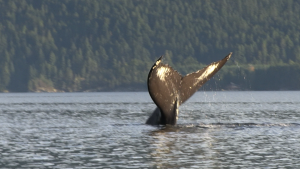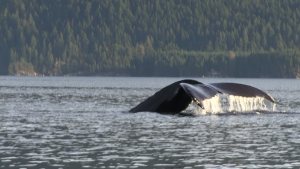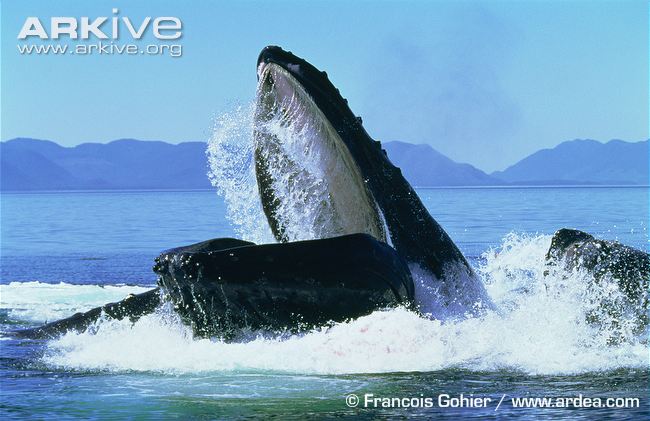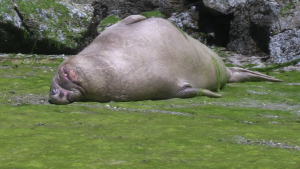Did I mention the engine?
Sailing is a zen art form – working with the wind, feeling its direction, its strength, its pulse – riding the sea as she rocks and cradles you. Or sends you flying across the deck in wild parody of cradles gone mad. Flung from port to starboard, bracing bow to stern, every muscle in your legs charlie horses in agony.
Becoming intimate with the elements, reading the sky, full-on stars on a moonless night. Ah the romance, the glamour. But in the pub, over a beer or two, conversation inevitably collapses into consulting about water pumps or electrical wires or some noise in the engine that can’t be identified.
And with a 1972 engine there’s a lot of noises. Like the one that erupted from the engine block after Terry and I installed the carburetor for the 4th time and started it up.
“OMG WHAT WAS THAT????” Both of us jumped for the “kill” switch in horror.
“There’s an asthmatic weasel in there and it’s going POP!” I spluttered still shaken from the horrible clanking cough.
“That’s it. This time it’s a !#$! anchor!” swore Terry.
That was at the end of November. THAT was a sound I never want to hear again. Despondent and discouraged, Terry and I spent the next couple of months looking for other sailboats with skookum engines and more headroom (Terry is 6’4″) that we could afford to buy – none. And figuring out how much money we could get for the Parrot ship with a non-functional engine – none. We were at an impasse.
After New Years we visited the Parrot ship to mull things over. A few other skippers were puttering around their boats so we got brave and fired up the engine again, asking them to give a listen. The weasel had got over his death rattle cough and was banging around in the engine block with steel-toed boots on. It sounded like a thrown rod to me (who knows worse than nothing)
“Yah, could be” said the skippers.
Advice from the puttering skippers? “Run it till it dies.”
“How long will that be?”
“Could be a year or two”
“OK, but what happens then? It’s not like we can call a tow truck.”
“Coast Guard is always looking for something to do” offered another skipper.
We desperately needed somebody for a fourth opinion. And I knew just the somebody. Kim, our local sailing club commodore. I asked him if he would take a listen to “The anchor” and tell us whether it really was an engine or just ballast. The generous fellow agreed and arrived at the ship with a meter long piece of 3/8″ dowling which he used like a stethoscope to examine the sound of each cylinder and valve. Of course “The anchor” started up fine for Kim although he still couldn’t get a slow idle. Still, after running it for 20 minutes with varying amounts of throttle he diagnosed the problem as “Sticky valves from not being used. Seems to be running better now.” At which point “The anchor” stopped dead.
“That’s what happened when we were coming into the harbour last time” said Terry
“Start ‘er up again” said Kim
“chugga chugga chugga chug” said the weasel “chugga chugga chugga chugga chugga….” “chugga chugga chugga” “chugga chugga” …..etc.
“Are you giving it some choke?” Kim yelled
“Yah, it doesn’t start without it” I yelled back
“Don’t” yelled Kim “Maybe we flooded it.”
While we waited for the flood to subside Kim sprayed some WD40 into the cylinders, a tricky job. Choke full out we started “The anchor” again. After 15 minutes of running in neutral, forward and reverse at the dock Kim decided we should take the Parrot ship out of the harbour and motor around to test her under real conditions.
“Wow! we’re out of the harbour. I could enjoy this” Terry was at the helm as Kim, who was half inside the engine compartment, shouted out throttle and gear commands to him through the companionway. Blue Parrot was motoring through the tests. I was smiling. It wasn’t raining and we were motoring along outside the harbour breakwater – when “The anchor” lived up to its name.
“WTF?” said Terry “WTF?” said me.
“Quick! get me some of those oil cloths” yelled Kim. I grabbed a few and peered in the companionway where he was stuffing cloths into the flame arrestor which he’d just pulled off the carburetor and which was drooling pink gas. oh oh.
Kim mopped up the gas and put the flame arrestor back on the carburetor loosely just in case he had to yank it off again. “OK. Start her up”
“chugga chugga chugga chug” said the weasel “chugga chugga chugga chugga chugga….” You get the picture.
“The anchor” finally started but a wind was coming up so we opted to take her into an easier part of the harbour just in case “The anchor” cut out again. Of course it didn’t.
A few days later we prevailed on a friend with a dinghy to accompany us, just in case we needed a tow, as we motored straight back to our slip on a beautiful sunny day perfect for sailing. sigh…..
Back in our slip we were racking our brains about how to configure a mount for a reliable outboard motor. Meanwhile, Terry noticed some interesting configurations on the sailboat in the slip across from the Parrot ship. He struck up a conversation with Tony, the owner of the boat.
Tony is a retired mechanic who moved to Powell River last year. Aside from being a virtuoso mechanic and gardener he designs and engineers his own boat fittings from scraps of wood and metal he saves or salvages. He is also a very good teacher as we found out later. And his brother-in-law has an Atomic 4 engine in his boat that needs rebuilding. So he was very interested in our Atomic “anchor”.
“Can I take a look at it?” Tony asked
“Come in, come in” said the spiders to the fly. (He doesn’t know what he’s getting into we were thinking.)
“Can you start it up?” So we did. “Do you know how to adjust the idle mixture?” he asked
“We’ve tried and tried but it won’t go into the slow idle”. Tony tried but the engine revolutions wouldn’t slow for him either. And of course the carburetor leaked.
“Did you clean it?” asked Tony. “Only 3 or 4 times” we answered.
“These are simple carburetors but very touchy” he advised. “A tiny piece of sediment can clog up the float bowl needle or prevent it from seating. That will cause the carburetor to flood. Let’s take it off and check it out. I’ll get my tools. It’s a cute engine.”
“OK” Terry and I choroused happily. We could hardly believe it. A cute engine? Definitely a different perspective on The anchor.
A few minutes later the carburetor was off and Tony was cleaning it delicately with surgical precision. “See this piece of dirt?” I put on my reading glasses and could barely make it out. “It was in this pickup tube. That could be preventing fuel or air from getting through” he pointed to 2 microscopic idle discharge holes in the tube. “Now let’s try it again”.
We put it back in place, started “anchor” and Tony actually got the slow idle. But it was running a bit rough. How could that be?
“Let’s take a look” said Tony calmly and took off the carburetor yet again (6th time). “See this?” he said pointing to the throttle plate. “It’s just slightly out of adjustment and not quite seating completely” He moved it 1mm, replaced the carburetor and “anchor” fired up right away without being choked. The weasel jumped on his wheel and ran resolutely and rhythmically. The carburetor eased down smoothly into a steady slow idle.
“I don’t believe it Tony. You’re a miracle worker! Can we offer you lunch? A new lease on life? A lifetime of hugs?”
“Because of you we’ve decided to rename the anchor” we told Tony.
“Oh, what are you going to call him?” he asked
“Lazarus” we said. He laughed. “We should do the valves. I’ll show you how to adjust the valve tappet clearances”
It took a couple of hours to get the valves done. “Keep the feeler gauge level and feel as it just starts to get a little bit of resistance when you move it in and out” he instructed. It would have taken us a week to adjust the clearances and we would have been guessing. Youtube videos can’t give you the “feel” of when something is perfectly adjusted. Nothing like having a personal trainer.
“Let me know when you want to do the points and condenser. I’ll bring my timing light” Terry and I perform copious jumps for joy in our minds YES! YES! Tony, we worship you. After 2 1/2 years of constant frustration we can’t believe our good luck to have his virtuoso assistance.
I am happy to inform you that the weasel is currently doing a sly soft shoe shuffle as Lazarus is purring along. It feels incredible to be able to get out of the harbour with a reliable engine. We’re pulling out instrument manuals and electrical wiring diagrams. Finally we can start on all the other upgrades and minor repairs we’ve wanted to do but couldn’t because of – Lazarus.



 Terry, Jamie and I are perched together on rocks as far out as we can get at low tide waiting for the whales to come around to our side of the inlet. Jamie, who knows their routine, is sure they will make their usual circle and cruise by our campsite. It is dusk already. We can see 2 or 3 whales out in the middle of the inlet. Some of the resident sea lions seem to be playing around them but the light is fading.
Terry, Jamie and I are perched together on rocks as far out as we can get at low tide waiting for the whales to come around to our side of the inlet. Jamie, who knows their routine, is sure they will make their usual circle and cruise by our campsite. It is dusk already. We can see 2 or 3 whales out in the middle of the inlet. Some of the resident sea lions seem to be playing around them but the light is fading.
 Being positioned at a good angle while close enough to capture detail is a challenge. However, if we can identify our whales, we might be able to find them again at their southern migration points in Mexico, Hawaii or even Japan.
Being positioned at a good angle while close enough to capture detail is a challenge. However, if we can identify our whales, we might be able to find them again at their southern migration points in Mexico, Hawaii or even Japan. 



